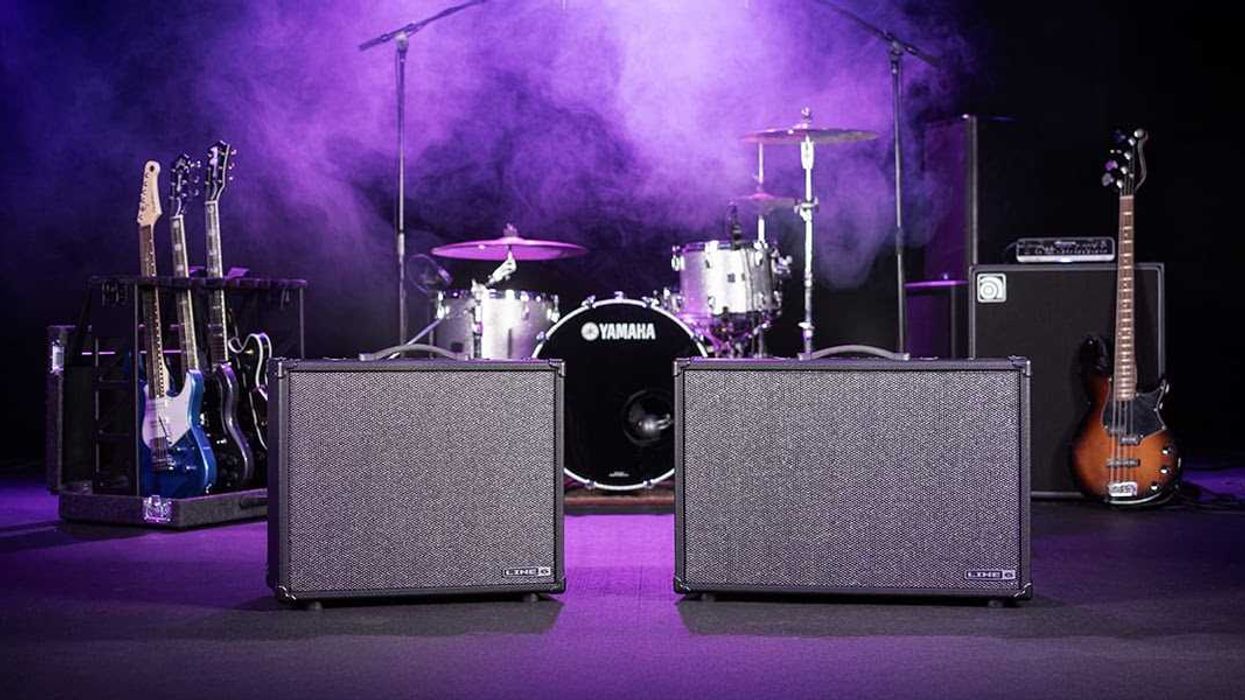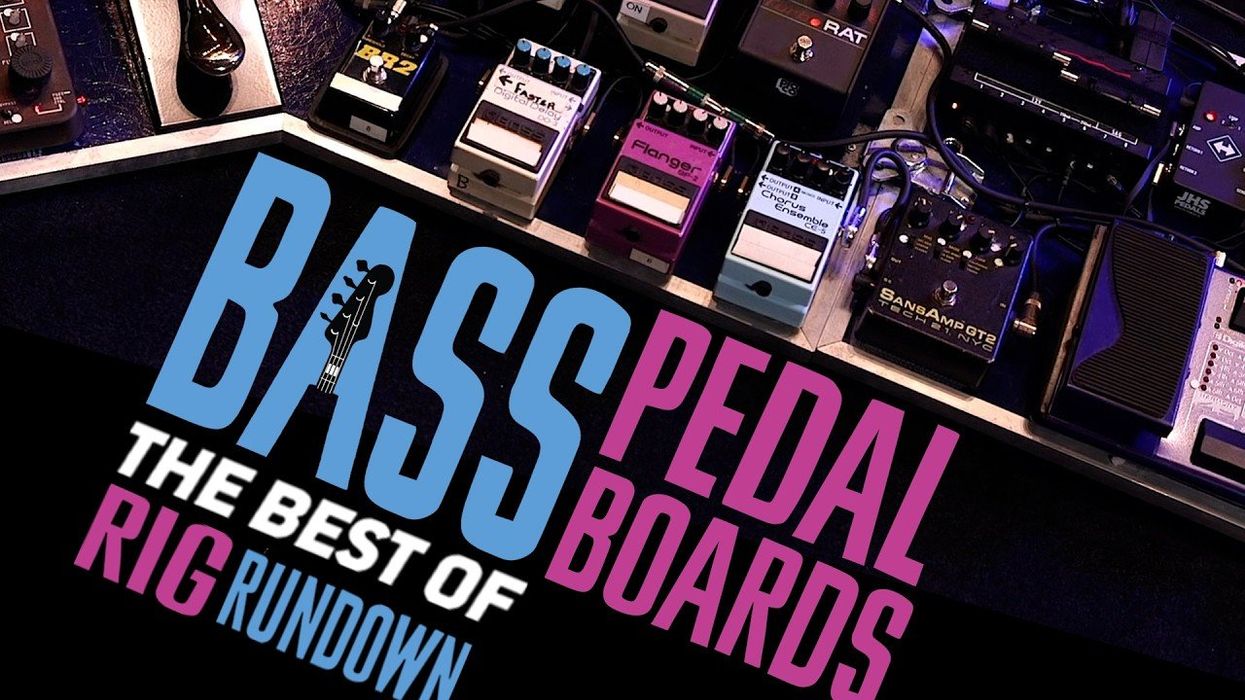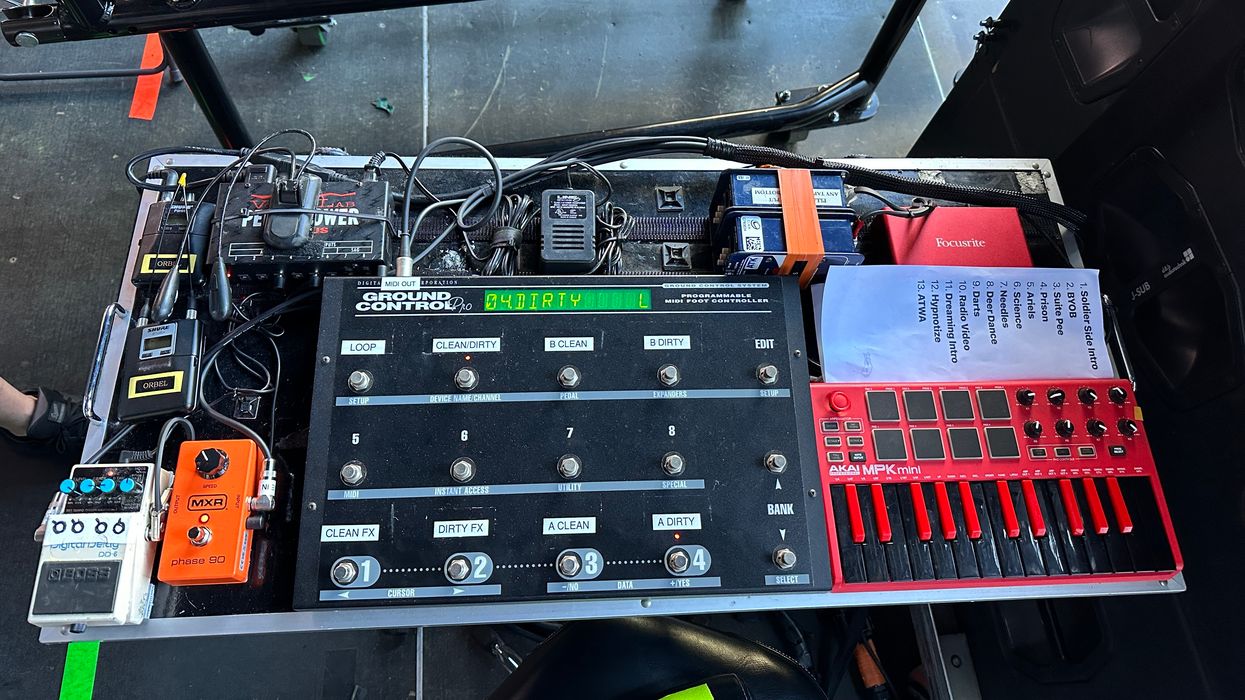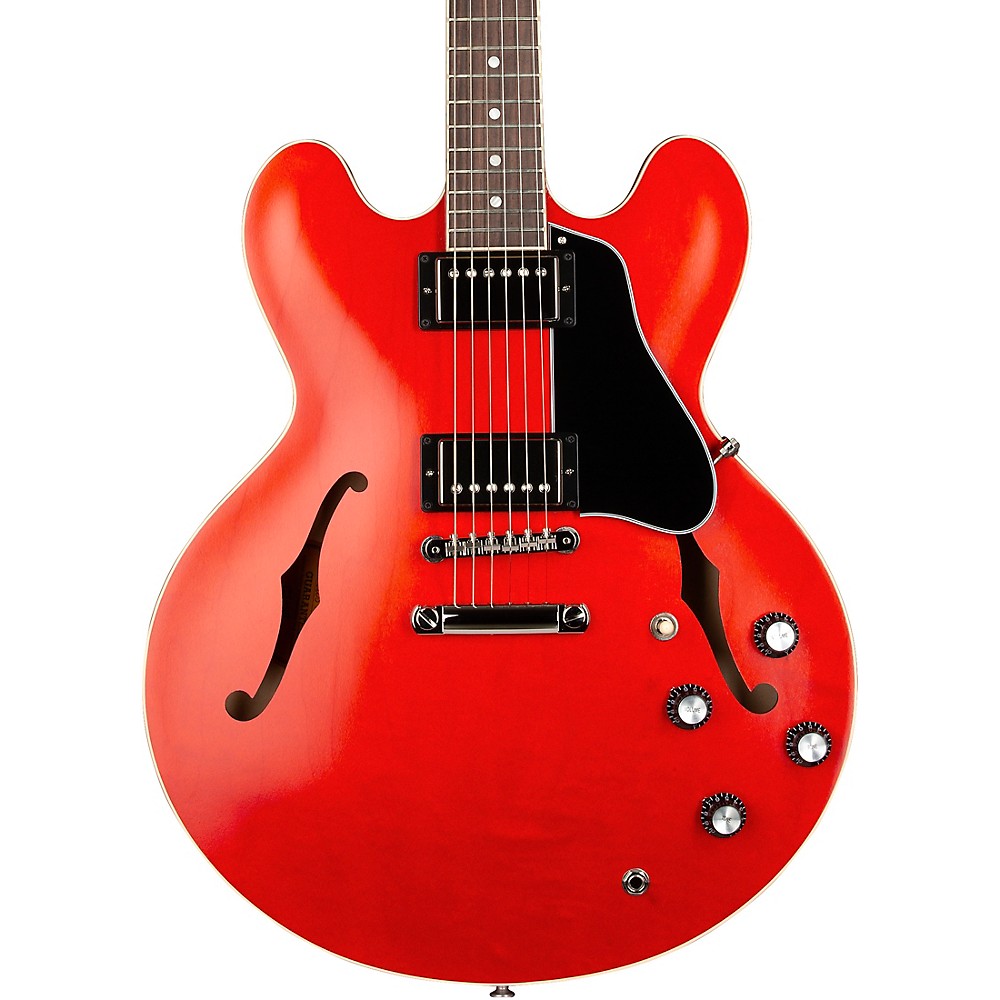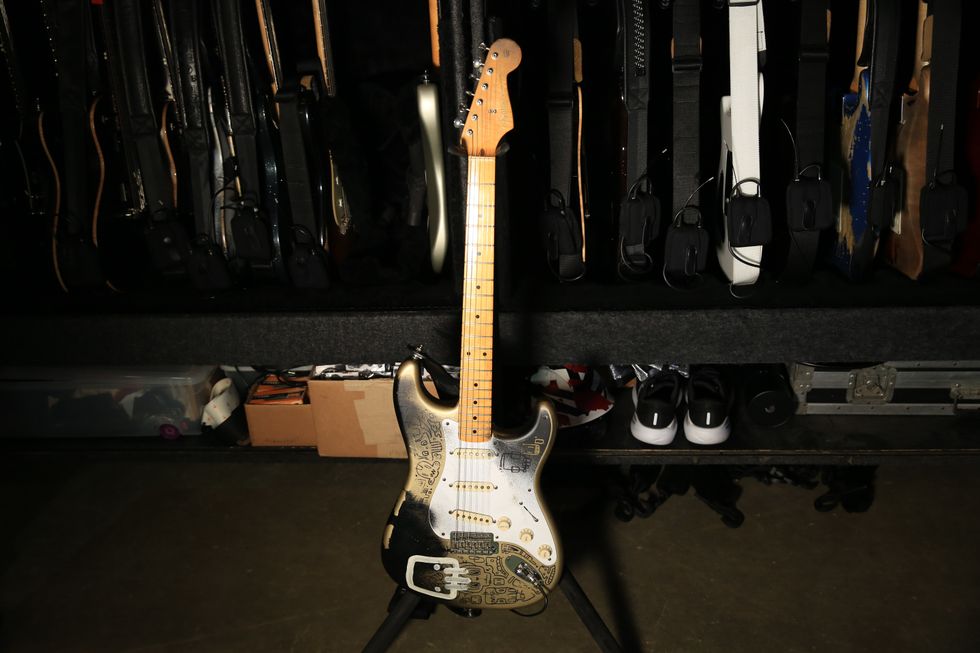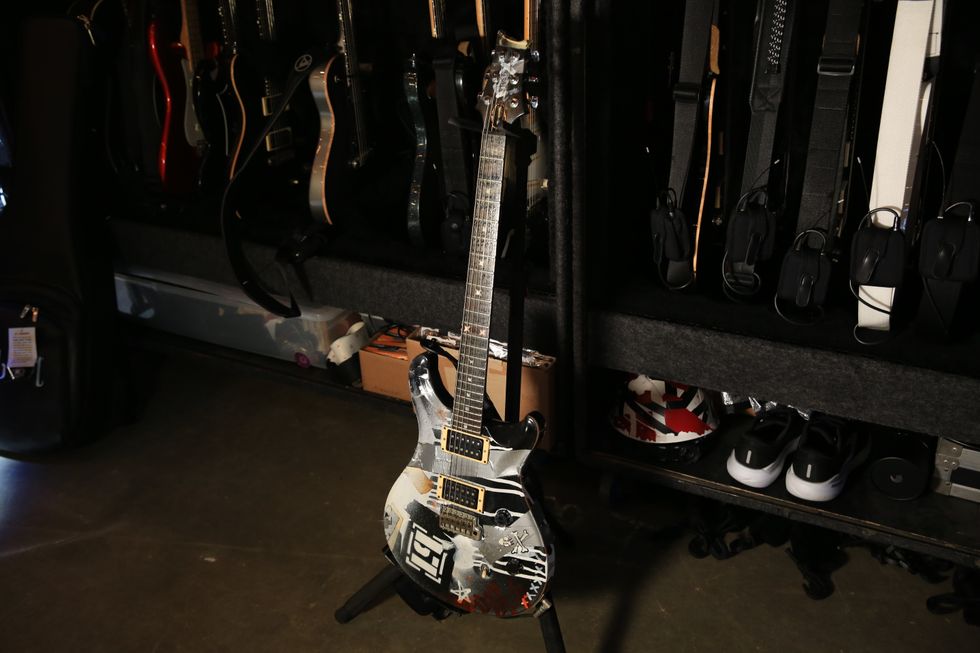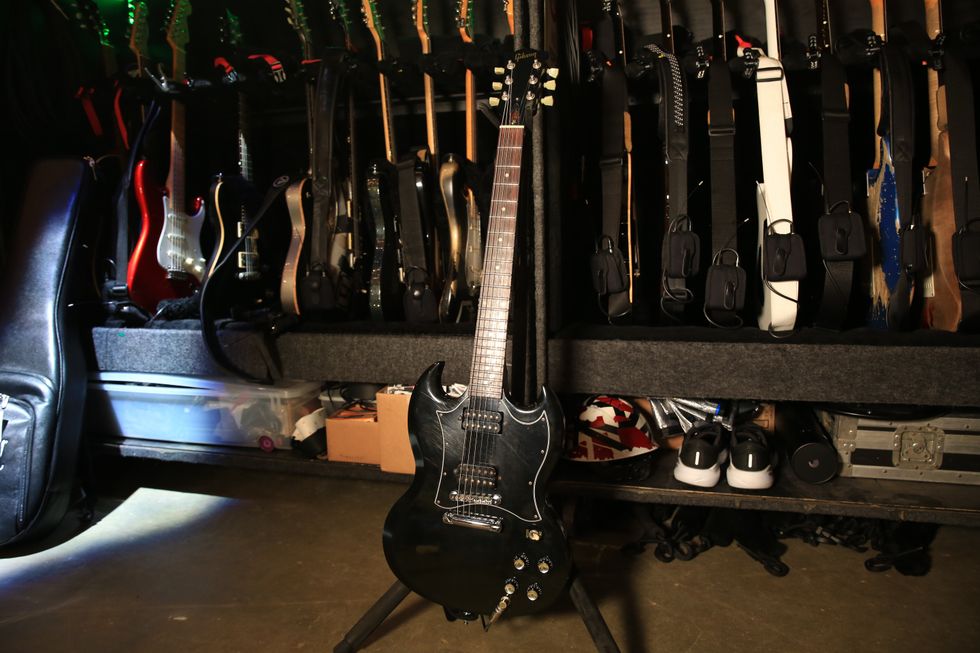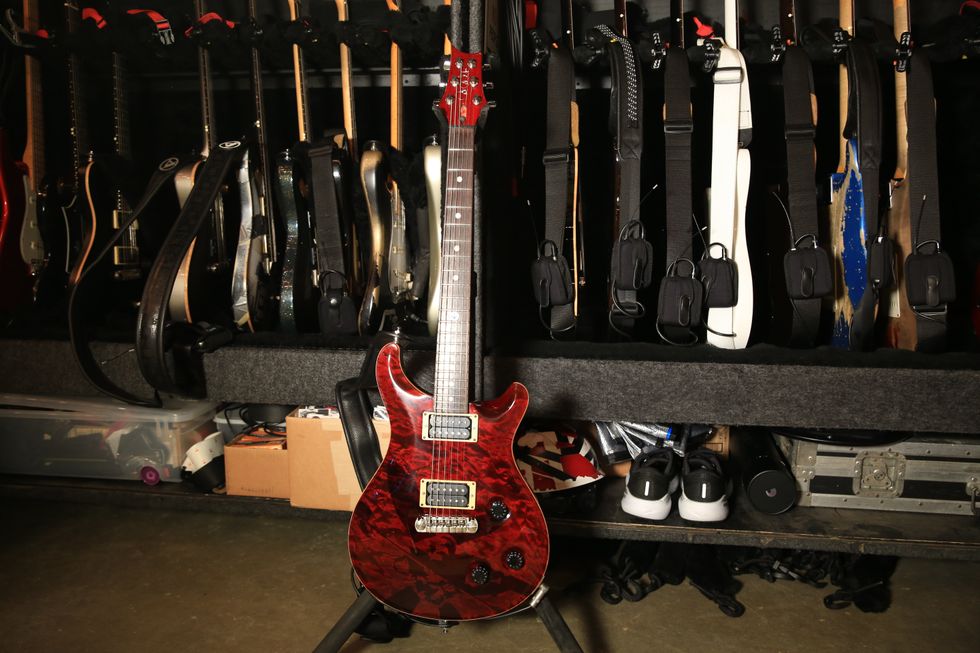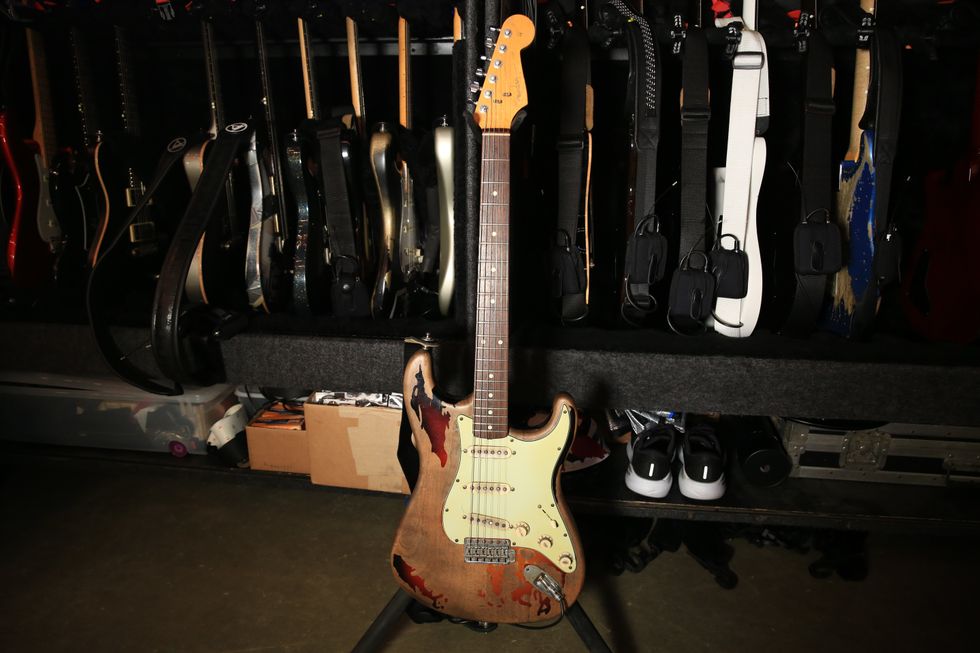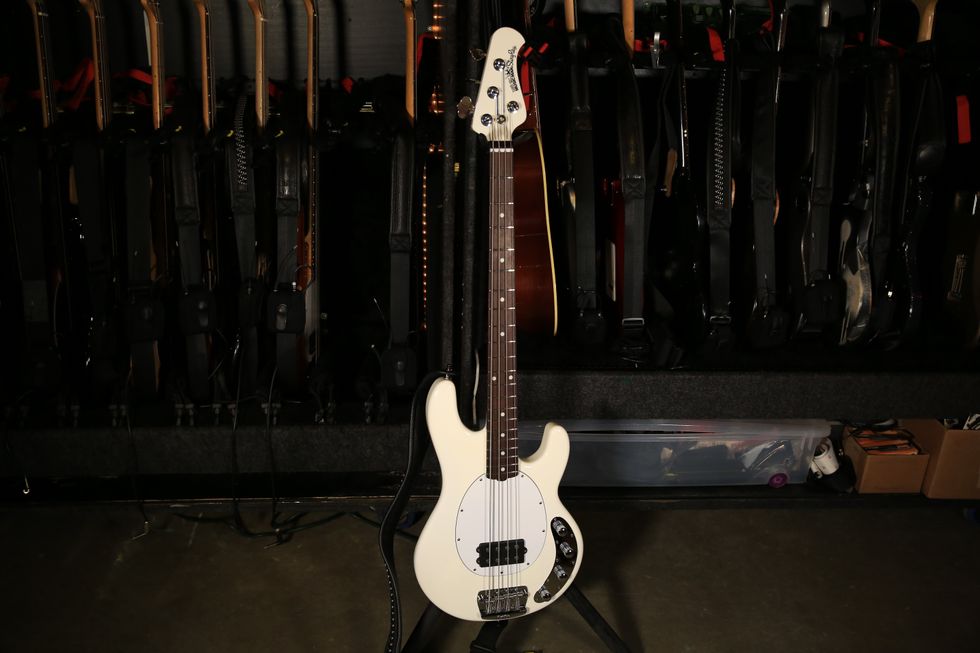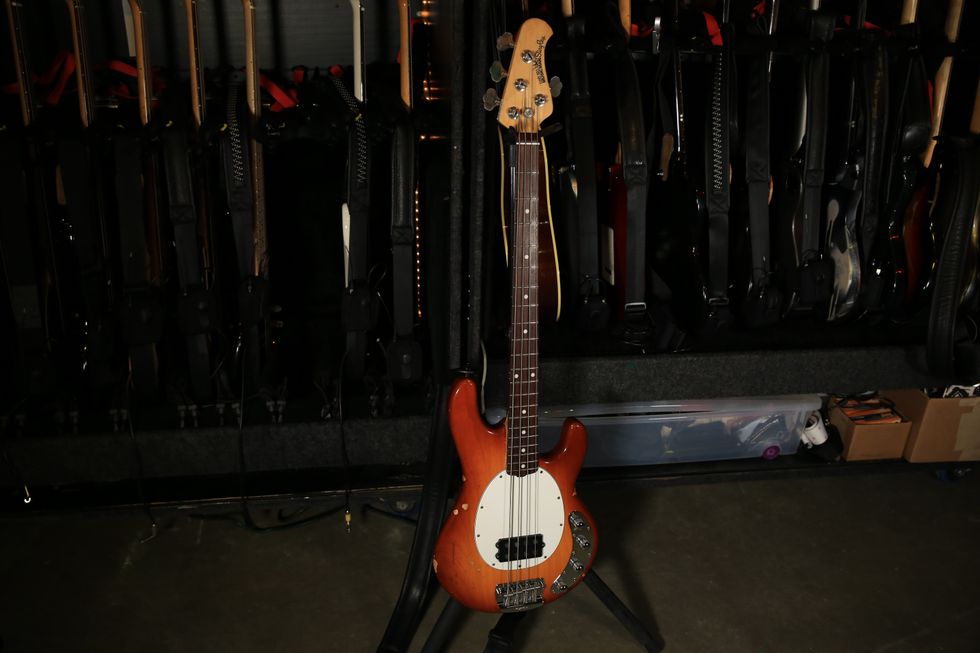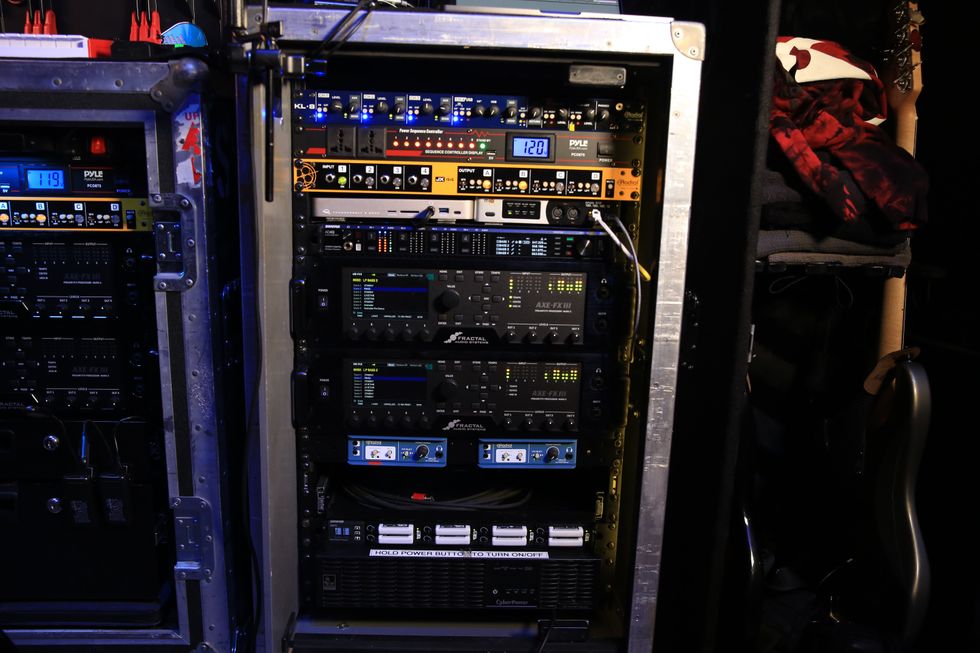The rockin’ riff lords take Fender’s squeaky-clean sound palettes and blast them with dirt on their latest tour.
Hard rockers Baroness were busy writing during the early days of the pandemic, sharing ideas and bits of songs over weekly video calls until they had enough for a new record. Then, after scouting for potential recording locations, they rented an Airbnb in a tiny town in New York and got to work.
The band brought all their gear along with them: They literally loaded up a U-Haul truck and left no pedal behind—a bit unnecessary in retrospect. At the end of their stay, they’d all but finished their sixth studio album, Stone, which was released in September 2023. On their recent summer tour supporting the record, the quartet played Nashville’s Basement East, where PG’s Chris Kies met up with vocalist/guitarist John Baizley, guitarist Gina Gleason, and bassist Nick Jost to get an in-depth look at their current road rigs.
Brought to you by D’Addario.
Franken-backer
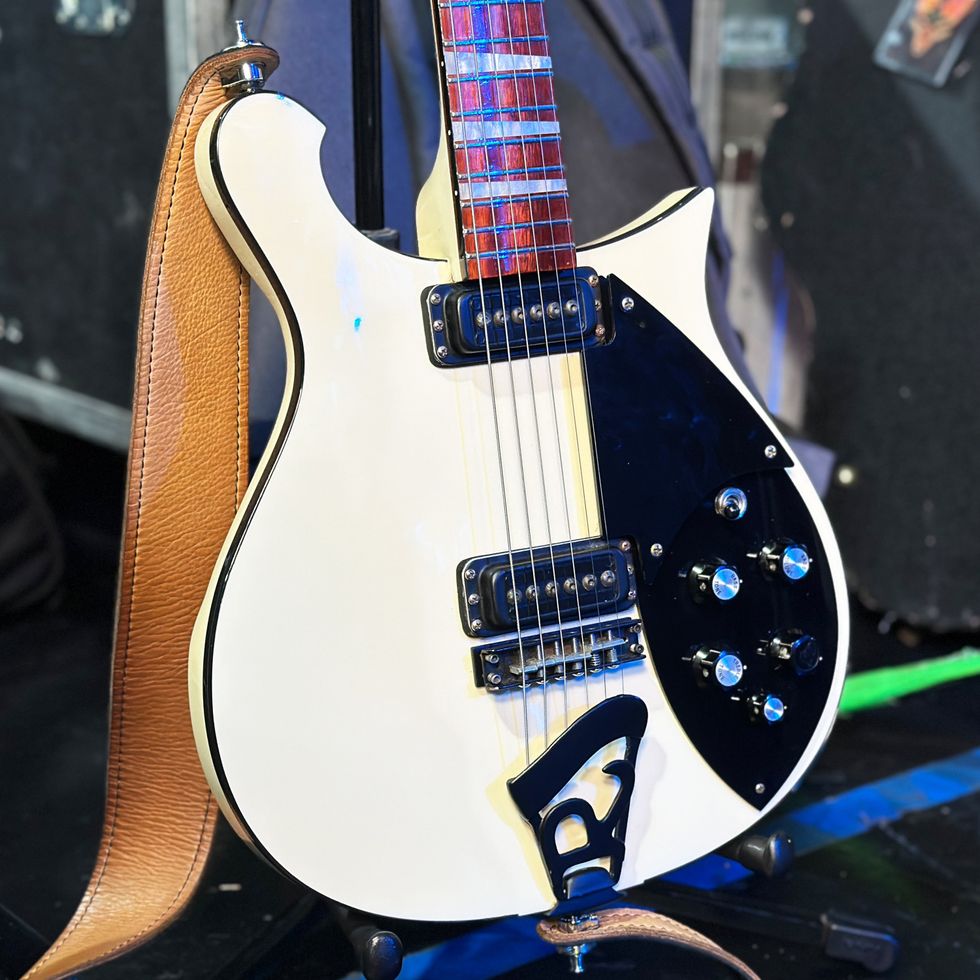
Baizley received this custom-built Rickenbacker during the band’s sessions for Stone. It’s got the body and electronics of a Rick 620 but the neck of a 660 model. The Rick and Gleason’s Tele fill in the sonic gaps for each other.
I Think I Smell a Strat
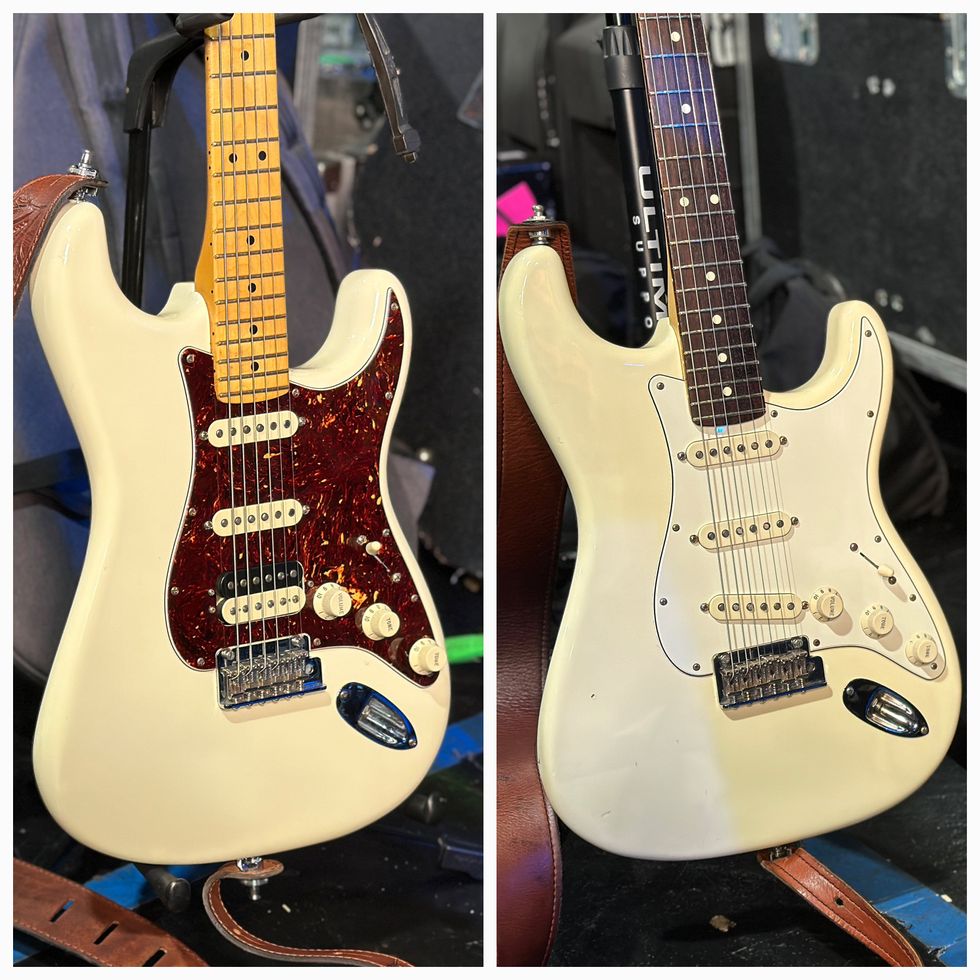
Baizley’s other two primary guitars are these Fender Stratocasters. The first is an American Pro II with a tortoiseshell pickguard and HSS pickup configuration; the second is an original American Pro. The AmPro II lives in heavier tunings and takes a set of .012–.052s, but Baizley prefers both in the fourth position of the 5-way selector switch to build space around Gleason’s leads.
Tele Twins

Gleason rocks two Fender Telecasters, again from both the American Pro I and II series. She actually prefers the first iteration of the V-Mod pickups for their aggression and grit in live contexts, while the V-Mod IIs make for a smoother recording weapon. One stays in D-standard tuning while the other is in C standard with a dropped A#. Gleason strings them with .009–.046s and .010–.046s, respectively, and the whole band loves D’Addario NYXL sets.
So Bass-ic
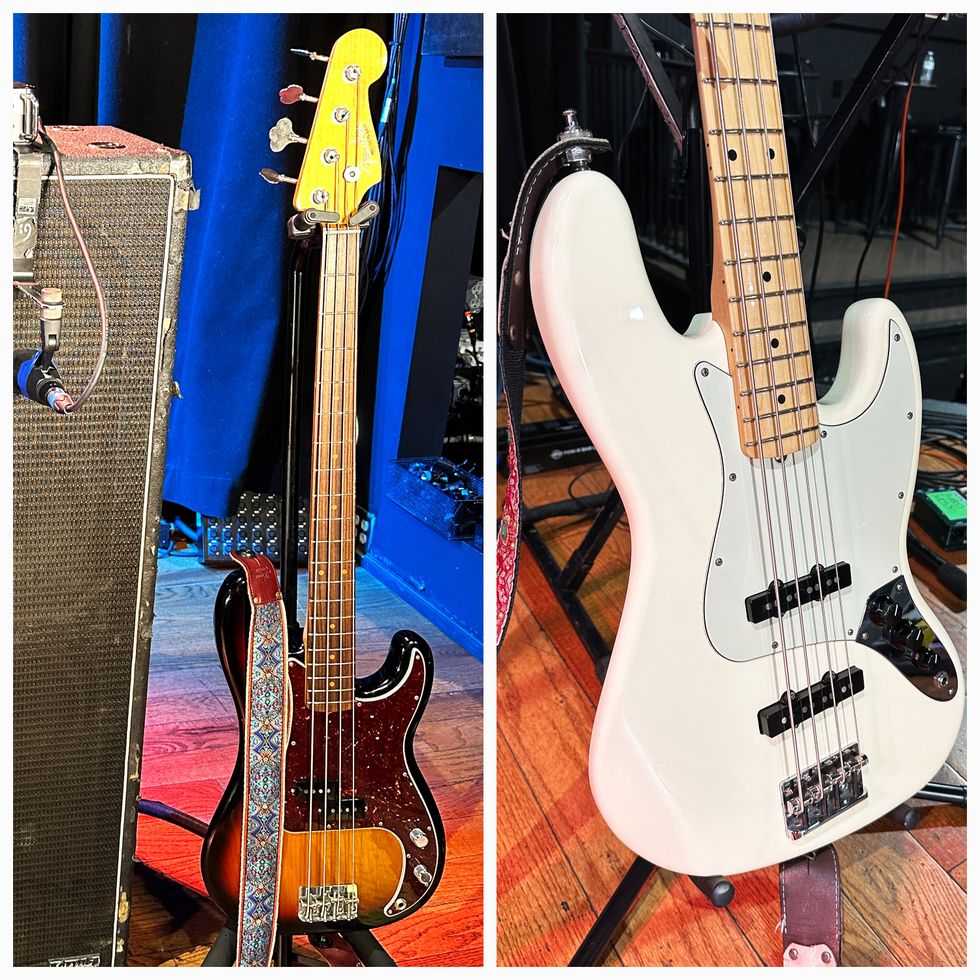
Bassist Nick Jost is a Fender man, too, with a Precision Bass and American Professional Jazz Bass that both run through his mini-but-mighty rig: A diminutive Gallien-Krueger Legacy series head powers a classic Ampeg 8x10 cabinet. He usually plays with his fingers, but when he loses a game of dice on the road, he’ll sometimes be forced into playing with a pick.
Dual Stereo

Baizley and Gleason both run stereo amp setups. Baizley changes his amp backline often; he used to run twin Roland JC-120s but just recently switched in this Fender ’68 Custom Deluxe Reverb.
Gleason keeps the Fender train rolling with a ’59 Bassman reissue and a ’68 Custom Princeton Reverb.
John Baizley’s Pedalboard
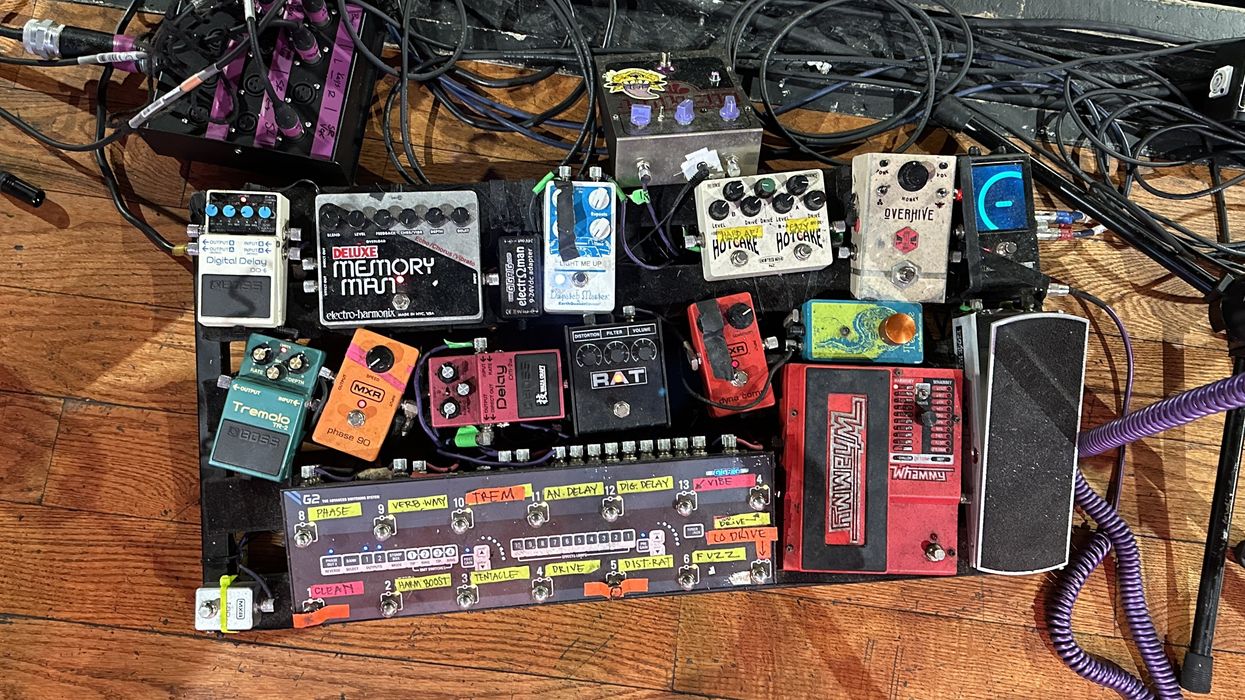
Baizley’s board is packed with staged dirt boxes and tasteful mod stomps, all held in check with a GigRig G2, Peterson StroboStomp, and Ernie Ball Volume Pedal. The crown drive jewels are a heavily modded EHX Big Muff and Crowther Double Hot Cake, but a Beetronix FX Overhive and Pro Co RAT add some sizzle, too. A Boss DD-3, DM-2W, and TR-2, EarthQuaker Devices Dispatch Master and Tentacle, MXR Phase 90 and Dyna Comp, and EHX Deluxe Memory Man handle the rest, while a DigiTech Whammy lurks for its moment to blast off.
Gina Gleason’s Pedalboard
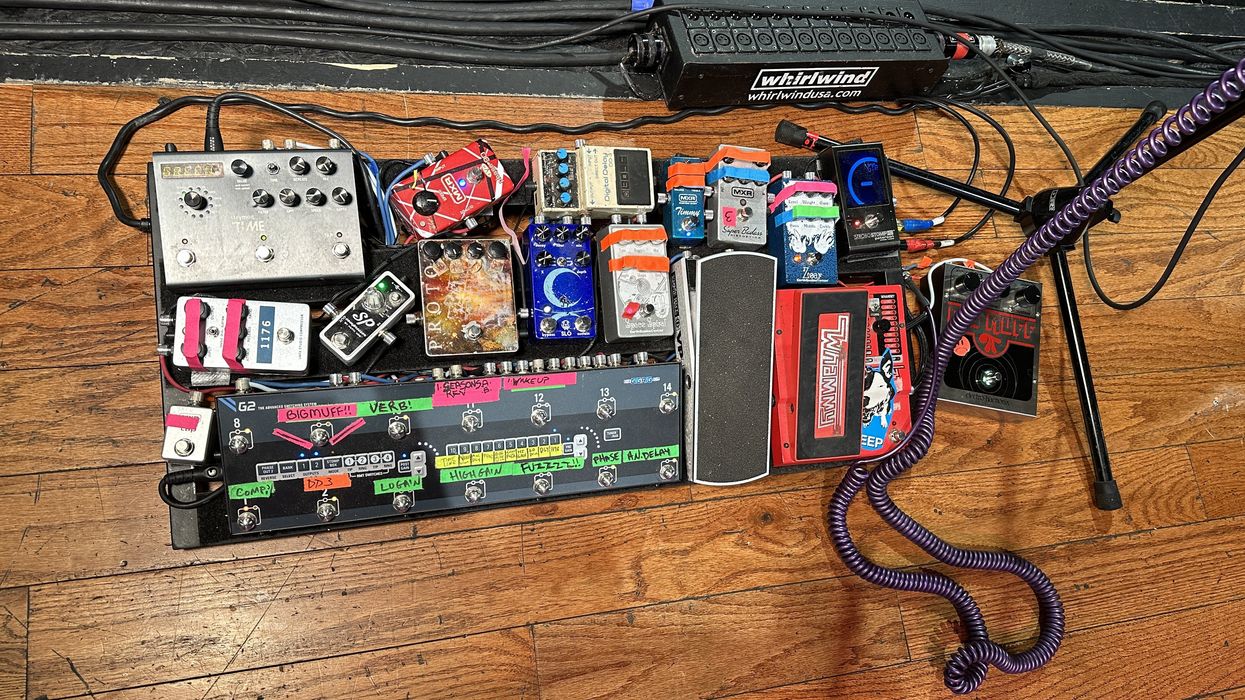
Gleason’s favorite drive these days is the EQD Zoar, their instant-classic 2023 release. Piling on top of that are a MXR Super Badass Distortion, MXR Timmy, modded EHX Big Muff, and a touchy Philly Fuzz Infidel prototype; an Xotic SP Compressor and UAFX 1176 Studio Compressor tighten things up when needed. Three time machines—the Strymon TimeLine, EQD Space Spiral, and Boss DD-3—handle delay, and a Walrus Slo dishes out reverb. The MXR EVH Phase 90 adds some color along with another DigiTech Whammy. The Ernie Ball Volume Pedal, Peterson StroboStomp, and GigRig G2 keep Gleason’s board in line, too.
Nick Jost’s Pedalboard

Jost’s bass board, powered by an MXR Iso-Brick, is a touch more simple, with an Ernie Ball Volume Pedal and Boss TU-3 for utility duties before an Xotic Bass BB Preamp, Boss ODB-3, DOD FX69B Grunge, MXR Stereo Chorus, and Tech 21 SansAmp Bass Driver DI.

Roland Jazz Chorus-120
Fender '68 Custom Deluxe Reverb
Fender Bassman
Fender '68 Custom Princeton Reverb
Fender American Professional Telecaster
Fender American Professional Stratocaster
Fender Precision Bass
Fender American Professional Jazz Bass
Gallien-Krueger Legacy 800 Bass Amp Head
Ampeg 8x10 Cab
Tech 21 SansAmp Bass Drive DI
MXR Iso-Brick
Boss TU-3
Xotic Effects Bass BB Preamp
Boss ODB-3
MXR Stereo Chorus
Modded EHX Big Muff
Boss DD-3
MXR Dyna Comp
Pro Co RAT
MXR Phase 90
Boss TR-2
EHX Deluxe Memory Man
EarthQuaker Devices Dispatch Master
DigiTech Whammy
Walrus Audio SLO
Boss DM-2w
EarthQuaker Devices Tentacle
Peterson StroboStomp
Beetronics Overhive
EarthQuaker Devices Zoar
MXR Timmy
MXR Super Badass Distortion
Xotic SP Compressor
MXR EVH Phase 90
UAFX 1176 Compressor
Ernie Ball Volume Pedal
D'Addario NYXL .110 Strings
Strymon TimeLine
![Baroness Rig Rundown with John Baizley, Gina Gleason & Nick Jost [2024]](https://www.premierguitar.com/media-library/youtube.jpg?id=53559996&width=1200&height=675)


















